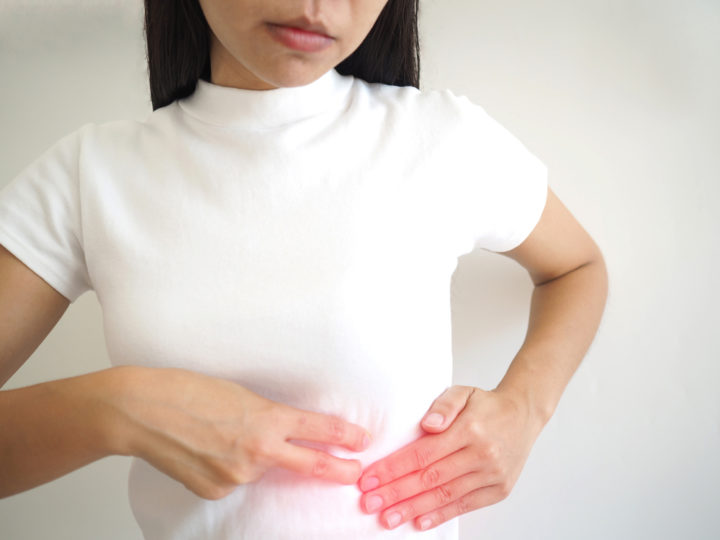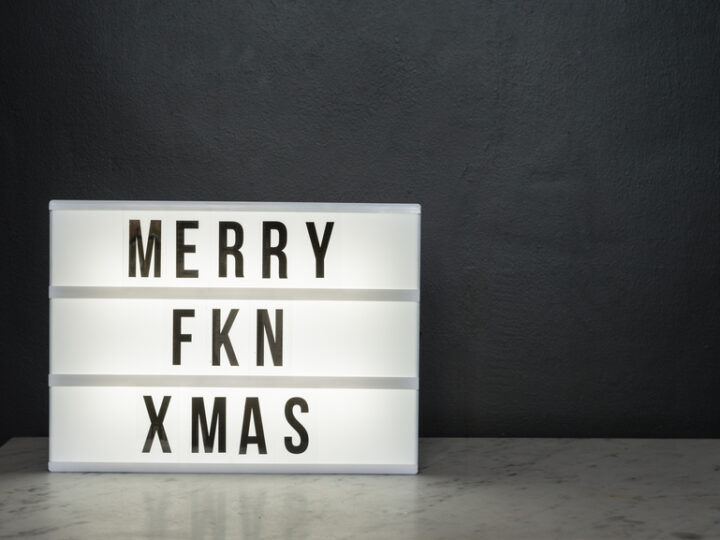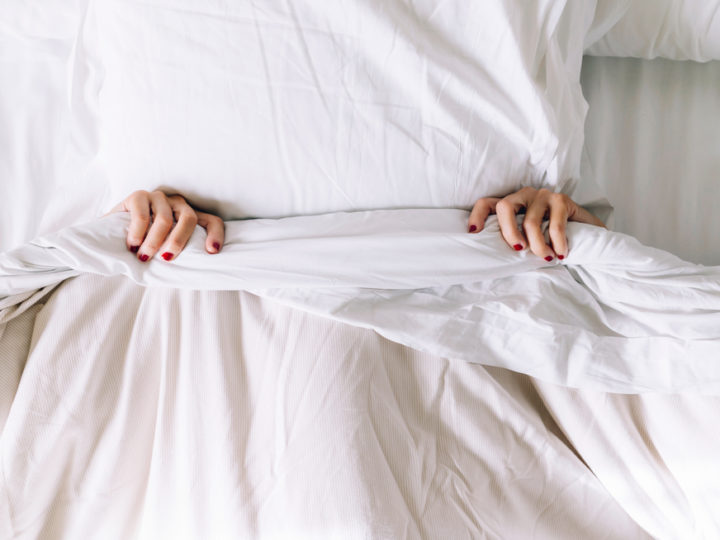MODERN STRESSORS
And Ancient Acupressure Points
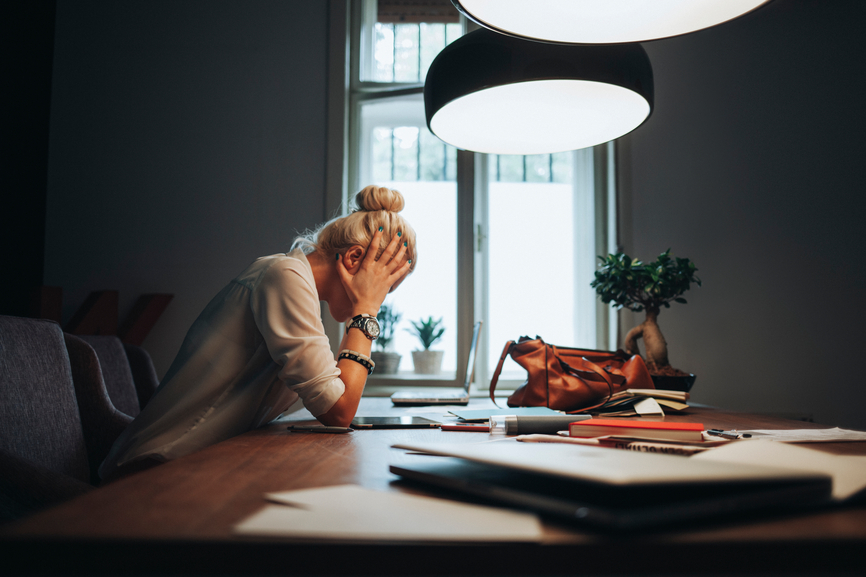
From the way we use tech in every aspect of work and home life, to physically suffering for fashion, there are some complicated modern stressors which can result in some pretty painful physical tension. In Traditional Chinese Medicine (TCM) one of the best ways to ease pain and restore balance to the body is through the use of pressure points. Most TCM practitioners tend to suggest the full nine yards of acupuncture treatments, but you can get similar effects at home by using acupressure. Acupressure is like a combination of a regular massage with the science of acupuncture. All you need are steady hands and an understanding of the important points (no needles required!).
For example, if your head is hurting, the pressure point that can help may be located on an entirely different body part, like the foot. By simply applying deep, steady pressure in a circular or up-and-down motion for several seconds to minutes, the body will respond and trigger pain relief, and relaxation. We rounded up the very best ancient acupressure points to cure five modern stressors that’ll leave you with a little less “ouch” and a little more “ahhh”.
1. Working on Your Computer is Becoming a Pain in Your Neck
Whether you’re typing away all day on your laptop or playing games on your iPhone, our necks aren’t designed to be crooked like that for so many hours each day. It’s no surprise that you may find a buildup of tension or a crick in your neck after you finally finish that report or beat your high score (we know you play that game).
In TCM, many acupressure points designed to soothe the neck also cross over to over areas as well, so don’t be surprised if you find additional tension relief in the back or shoulders, or find yourself feeling a little sleepy after massaging these points. Two of the most popular acupressure points for neck pain relief are Heaven’s Pillar (Bladder 10) and the Window of Heaven (Small Intestine 16).
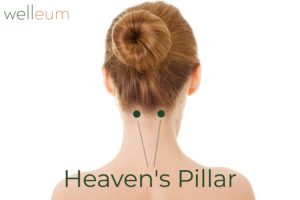
All the heavenly names hopefully hint at the heavenly release of pressure you’ll experience when trying these acupressure massage spots. Heaven’s Pillar consists of two points at the base of the neck and top of the back region, located about four inches below the hairline. The points are symmetrically placed on either side of the spine, right above the shoulders. When massaging this point, you might experience pain relief, a more limber and flexible neck, and relief from congestion and coughing.
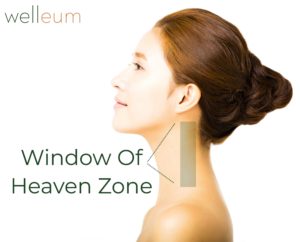
The second point to try out is one of the Celestial Window points, also known as Small Intestine 16. There are said to be several different points considered the Celestial Window, and many refer to the entire group of points by the singular name. This particular point is on the side of the neck, on the same level as the Adam’s apple. Massaging this area of the neck can provide tension relief along with easing sore throats or thyroid issues.
2. Your Co-Workers are Giving You Headaches
When it’s 8 am and what’s-her-face from accounting is inexplicably focused on getting your expense reports, your stress can start to rise. The effects of office politics can start to wear us all down and eight hours (or more!) a day of it can result in some nasty headaches and migraines. Work stress isn’t a one-step fix, however. While these acupressure points can definitely help relieve your tension in the moment, you might want to think about changing jobs or trying new strategies to reduce tension from the get-go.
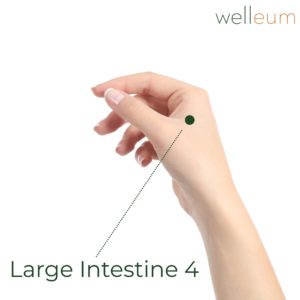 The acupressure point called Large Intestine 4, or He gu in Chinese, is a very common acupressure point used in TCM to treat headaches. It is considered one of the four primary “command points” in Traditional Chinese Medicine. To find this point, simply hold out one hand and find the muscle in the tendon between the thumb and pointer finger. Be sure to make sure you’re not just grabbing skin, though! The actual point is about an inch inward.
The acupressure point called Large Intestine 4, or He gu in Chinese, is a very common acupressure point used in TCM to treat headaches. It is considered one of the four primary “command points” in Traditional Chinese Medicine. To find this point, simply hold out one hand and find the muscle in the tendon between the thumb and pointer finger. Be sure to make sure you’re not just grabbing skin, though! The actual point is about an inch inward.
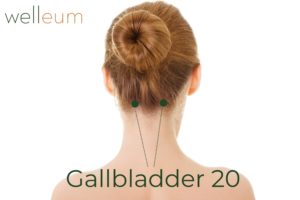 Another acupressure point to help you ease the stress headache of a long day or nagging coworkers is Gallbladder 20, or Feng Chi. Directly behind the earlobe, there’s a depression between the ear, scalp, and neck. Massaging this area for several minutes is said to soothe headaches, neck pain, or dizziness.
Another acupressure point to help you ease the stress headache of a long day or nagging coworkers is Gallbladder 20, or Feng Chi. Directly behind the earlobe, there’s a depression between the ear, scalp, and neck. Massaging this area for several minutes is said to soothe headaches, neck pain, or dizziness.
3. Those New Shoes are Killing Your Feet (But They Look Good)
You know the ones. Maybe you splurged a little to get those red soles, or perhaps you thought 4 inch heels were a good idea for that long night out for some reason. Regardless, at the end of the day two things are true; your shoes look amazing, and your feet are in serious pain. While you might be committed to the “beauty is pain” philosophy, the pain doesn’t have to continue on after the shoes come off.
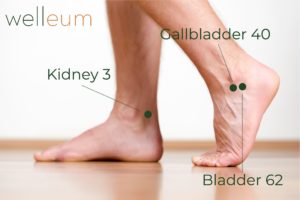 In TCM, the feet are known to contain many different pressure points, meaning there are several different acupressure massage options available to help you melt the pain away. The first point is called Kidney 3. This acupressure point can be found in the small indentation between your Achilles heel and the ankle bone. If you’re suffering from swollen and achy feet, this point might be the one for you.
In TCM, the feet are known to contain many different pressure points, meaning there are several different acupressure massage options available to help you melt the pain away. The first point is called Kidney 3. This acupressure point can be found in the small indentation between your Achilles heel and the ankle bone. If you’re suffering from swollen and achy feet, this point might be the one for you.
Another point designed to ease many kinds of foot pain is known as Bladder 62. This point is easy to find – it’s right below the ankle bone. Start at your ankle bone, on the inner side of your leg and then shift slightly down and back. You should feel a soft, pillowy indention that can comfortably fit the pad of your thumb.
The third point for foot pain is Gallbladder 40. First, locate your ankle bone, then shift to the front and then slightly below until you find a slight indent. If your shoes caused pain that traveled up into your ankle, this point might be able to help. It’s often used to help whole foot pain as well as reduce pain and improve stability of sprained ankles. You might also want to give this acupressure point a try if you have nerve pain or cramping.
4. Uncomfortable Office Chairs are Breaking Your Back
No matter how good your office chair is, sitting in weird positions can be a one-way ticket to back issues. In fact, back problems can arise from not sitting far enough back in the chair, your chair being too low or high from the desk, and any leaning action you might have developed.
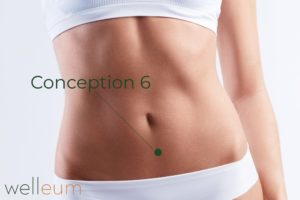 While adjusting your posture and sitting habits is the true way to long-term spine and back health, there are several acupressure points you can try to help provide relief from trouble spots. For the lower back, consider trying the Conception Vessel 6 point, also referred to as the Sea of Qi. To find this point, measure about two finger-widths directly beneath the belly button. It’s believed that this point provides strength to the muscles wrapping around the lower abdomen, which can help prevent back pain before it even begins.
While adjusting your posture and sitting habits is the true way to long-term spine and back health, there are several acupressure points you can try to help provide relief from trouble spots. For the lower back, consider trying the Conception Vessel 6 point, also referred to as the Sea of Qi. To find this point, measure about two finger-widths directly beneath the belly button. It’s believed that this point provides strength to the muscles wrapping around the lower abdomen, which can help prevent back pain before it even begins.
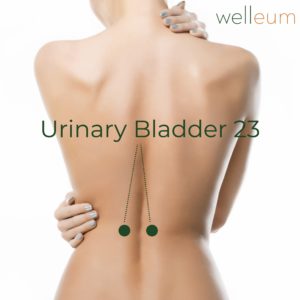 Another set of points designed specifically for the lower back is the Urinary Bladder 23 point, also referred to as Shen Shu. This is one of the main points used for chronic lower back pain or sciatica. To find this point, count up from the base of the spine to the point between the second and third vertebrae. The points are on either side of the spine. Be sure to avoid putting excess pressure on the spine itself.
Another set of points designed specifically for the lower back is the Urinary Bladder 23 point, also referred to as Shen Shu. This is one of the main points used for chronic lower back pain or sciatica. To find this point, count up from the base of the spine to the point between the second and third vertebrae. The points are on either side of the spine. Be sure to avoid putting excess pressure on the spine itself.
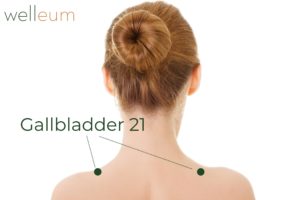 To address pain that may have developed in the upper back from all that poor posture, consider giving the Gall Bladder 21, or Jian Jing, a try. This acupressure point is one of the easiest to find, because most of your shoulder and upper back tension tends to revolve in these areas. Start at the top of your shoulders and slide your hands about two inches out from the base of the neck. You should at this point find the point of tension. Press and massage in this place on either side of the neck for best results.
To address pain that may have developed in the upper back from all that poor posture, consider giving the Gall Bladder 21, or Jian Jing, a try. This acupressure point is one of the easiest to find, because most of your shoulder and upper back tension tends to revolve in these areas. Start at the top of your shoulders and slide your hands about two inches out from the base of the neck. You should at this point find the point of tension. Press and massage in this place on either side of the neck for best results.
5. Never Ending To-Do Lists Are Keeping You Up at Night
Your mind is going a mile a minute. “Did you remember to sign-up for the that online workshop? Gotta make sure to text Ryan back in the morning. Oh shoot you have to make time to grocery store tomorrow”…and on, and on, and on. If you find yourself staring at the ceiling more than the inside of your eyelids each night, you might want to work on cutting down that to-do list. Cleansing your mind is an excellent place to start, but you should also do your best to be realistic about the number of tasks on your daily workload. Setting and maintaining reasonable expectations for yourself can help reduce stress, making it easier for your body to relax into sleep.
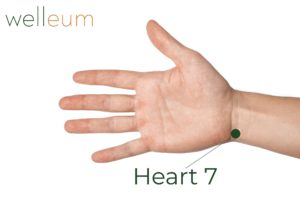 The first point to try in your quest for some shut-eye is the Heart 7 point, also known as Shen Men or Spirit Gate. To find the Heart 7 point, slide your hand from the tip of the pinkie finger straight down to the crease of the wrist. Though it’s very small, there’s a slightly hollow area here that signifies the Spirit Gate location. It’s believed that this point is able to calm racing thoughts and emotional distress, allowing you to drift off to sleep.
The first point to try in your quest for some shut-eye is the Heart 7 point, also known as Shen Men or Spirit Gate. To find the Heart 7 point, slide your hand from the tip of the pinkie finger straight down to the crease of the wrist. Though it’s very small, there’s a slightly hollow area here that signifies the Spirit Gate location. It’s believed that this point is able to calm racing thoughts and emotional distress, allowing you to drift off to sleep.
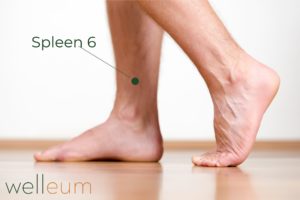 If the wrist doesn’t do the trick for you, try giving the leg a try using acupressure point Spleen 6, otherwise known as San Yin Jiao or the Three Yin Intersection. To find this point use four fingers of one hand to measure up from the base of your ankle. Massage deeply for several seconds in the area slightly to the side of the bone.
If the wrist doesn’t do the trick for you, try giving the leg a try using acupressure point Spleen 6, otherwise known as San Yin Jiao or the Three Yin Intersection. To find this point use four fingers of one hand to measure up from the base of your ankle. Massage deeply for several seconds in the area slightly to the side of the bone.
Apply deep pressure slightly behind your biggest lower-leg bone (tibia), massaging with circular or up-and-down motions for four to five seconds. In addition to helping with insomnia, simulating this pressure point can also help with pelvic disorders and menstrual cramps.
Newer
5 Ways To Love Your Body From The Inside Out
Older
Mung Beans & Pearl Beads - the Secret to Glowing Skin?
Comments (0)
Leave a reply
You must be logged in to post a comment.

